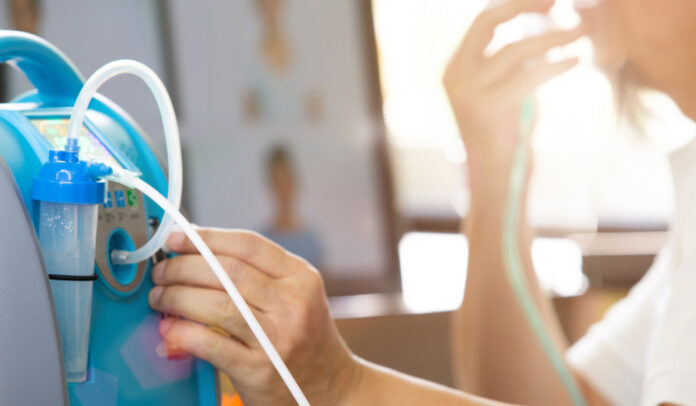What you need to know before buying an oxygen concentrator for home
As India battles the second wave of the coronavirus disease (Covid-19), oxygen concentrators have seen a renewed surge in demand, with disease-stricken patients and their relatives scrambling to get hold of one when faced with alarming drops in oxygen levels. Oxygen therapy has also emerged as a leading treatment in severe Covid-19 cases and as a helpful alternative to depleting stocks of liquid oxygen.
Oxygen level is measured by oxygen saturation, known briefly as SpO2. This is a measure of the amount of oxygen-carrying hemoglobin in the blood. A healthy individual with normal lungs will have an arterial oxygen saturation of 95% – 100%.
The World Health Organization (WHO) mandates that if the oxygen saturation level is 94% or lower, the patient needs to be treated quickly. SpO2 of less than 90% is a clinical emergency. Now, as per the Covid-19-related guidelines issued by the Union health ministry, the patient needs to be admitted to a hospital if the oxygen concentration goes down to 93% or lower, while that below 90% is classified as a severe disease, requiring admission in ICU.
Oxygen Concentrator FAQs
- What is oxygen concentrator?
Oxygen concentrators are medical devices that work to concentrate oxygen from the surrounding air. It cuts down the need for oxygen cylinders, as it draws oxygen from the surrounding air. - How does oxygen concentrator work?
Air is made up of 78% nitrogen and 21% oxygen. An oxygen concentrator works by absorbing the oxygen from the air and filtering out the nitrogen. It concentrates the oxygen to 90 to 95 per cent purity, which is then dispensed through a pressure valve that regulates the flow to the patient through a pressure valve. - At 90-95 per cent purity, is the oxygen from concentrators pure enough?
While it is not as pure as LMO (99%), experts say it is good enough for mild and moderate Covid-19 patients with oxygen saturation levels of 85% or above. It is, however, not advisable for ICU patients. - Do I need a prescription for an oxygen concentrator?
An oxygen concentrator should only be used under a doctor’s prescription and supervision. - How effective is oxygen concentrator?
Oxygen concentrators can be used to aid recovery of patients with low oxygen and in cases of mild COVID-19 infection. However, it is only a temporary arrangement and cannot be a substitute where the patient needs to be hospitalised. You should consult with your doctor on the best form of treatment. - Can Oxygen concentrators be harmful?
If used incorrectly, oxygen concentrators can cause oxygen toxicity. Hence, it should only be used under medical supervision. - Who needs an Oxygen concentrators?
Only mild to moderately ill patients, who have an oxygen saturation level between 90-94, should depend on an oxygen concentrator and can use it at home. Anyone with oxygen saturation depleting below 80-85 may need higher flow of oxygen and will have to switch to a cylinder or liquid medical oxygen supply. - Types of oxygen concentrators
There are two types— continuous flow and pulse dose. Continuous flow oxygen will provide the same flow of oxygen every minute unless it is turned off irrespective of whether patient is breathing it in or not, while pulse dose oxygen concentrator detects breathing pattern and dispenses oxygen when it detects inhalation. The oxygen dispensed per minute will vary in second case. - How to choose an oxygen concentrator based on flow rate
When buying an oxygen concentrator, always check the flow rate capacity. The oxygen concentrator must be used, based on the doctor’s prescription – the doctor will recommend the flow requirement in liters per minute (LPM), based on the patient’s condition and how much supplemental oxygen therapy is needed. Oxygen concentrators flow rates range from one to 10 liters per minute. It is advisable to opt for a unit that has more capacity than necessary – for example, if one needs 3.5 LPM, then, choose an oxygen concentrator with 5 LPM flow rate. The most important is to make sure you get 90% Oxygen at highest flow level.
Always choose a reputed brand and one which offers warranty.
What are the benefits of an Oxygen Concentrator?
Oxygen concentrators offer several advantages over oxygen cylinders.
- Consistency – Whereas oxygen cylinders can run out of oxygen, an oxygen concentrator will never run out of oxygen as long as it has air available and a supply of power. An oxygen concentrator extracts oxygen from the air itself, making the supply unlimited and readily available.
- Safety – An oxygen cylinder could begin to leak, and oxygen saturated air increases the risk of a fire. If a fire ignites under these circumstances, it is harder to extinguish because oxygen induced fires burn hotter than many other kinds of fires. Pulse-dose oxygen concentrators simply create oxygen as needed, eliminating the concern of leaks, and therefore the concern of flammability.
- Size – An oxygen concentrator is designed for convenience and portability – so it weighs much less. On the contrary, Oxygen Cylinders are bulky and heavy.
- Cost –is another factor to consider. For Oxygen Concentrators, the price is largely upfront. For Oxygen Cylinders, costs will be incurred over time – e.g. new Oxygen Cylinders purchased periodically as needed.
An Oxygen Concentrator is a great choice for all the above reasons. But individuals should also consider having a backup Oxygen Cylinder as well as additional, fully charged batteries for the Oxygen Concentrator in case of a power outage.
Some questions to consider:
- Do I want to rely on battery life or oxygen supply?
- What size device am I looking for?
- Do I want a bulky cylinder in the house or an easy to move concentrator?
In the end, it’s about deciding what offers the best choice for your lifestyle.
Safety tips for using oxygen concentrator at home
- Keep the oxygen concentrator at least 10 ft away from gas stoves. It should be placed in a well-ventilated area, away from sources of ignition.
- Never keep a matchbox, lighters, burnt candles or diffusers, near it.
- Do not smoke or let anyone smoke near the oxygen concentrator.
- Keep it at least two ft away from the walls and furniture when in use, to allow sufficient air intake.
- Avoid using anything flammable near the unit, including hand sanitisers and aerosol sprays, petroleum-based products like vaseline or air fresheners. Ensure that alcohol-based solutions and oil do not come into contact with oxygen supply devices.
- As the oxygen concentrator becomes hot when in use, keep it in a well-ventilated area, away from curtains.
- Avoid using an extension cord; use a proper electrical outlet.
- Keep the oxygen container upright and turn off the system when it is not being used.
- Always have a fire extinguisher nearby.






